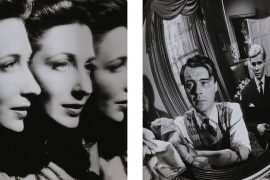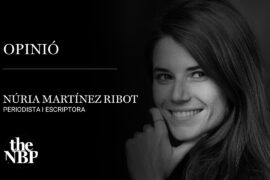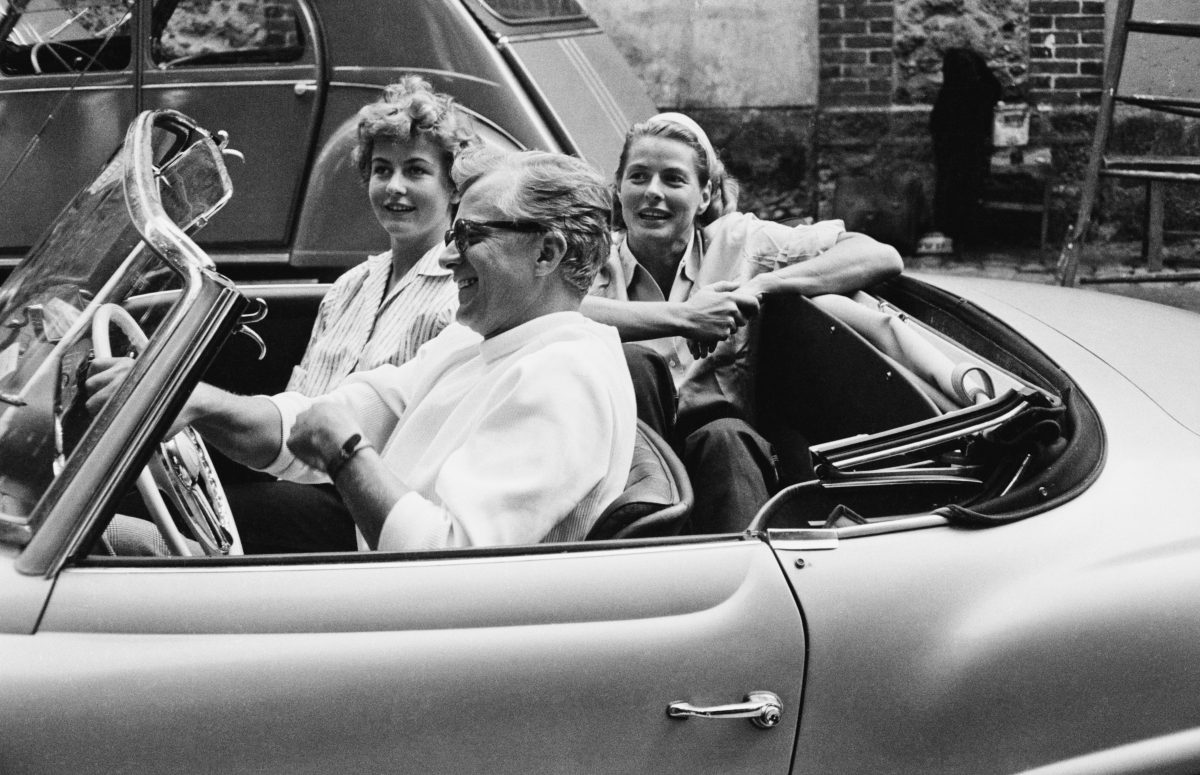
The Yes! Programme of the SHE Foundation, a school intervention...

Its spin-off, Peptomyc, is immersed in its second clinical trial,...

Banco Sabadell, with the collaboration of the University of Barcelona,...

"Mirrors, inside and outside of reality" is one of the...

There is no need, anymore, to go to Silicon Valley...

Research data confirm that physical exercise inactivity is a serious...

In Stuttgart there are two imposing museums for two leading...

Who is primarily responsible for the so-called "greenhouse effect"? What...

With 0.1% of the worldwide population, Catalonia produces 1.3% of...

After 137 years of history, the Catalan company of pyrotechnics...

Música clásica sobre la arena de la playa en dos...

The first session of the cycle on the regatta organized...

The hospital's managing director, Manel del Castillo, and the pharmaceutical...

Generalitat y Ayuntamiento impulsarán dos equipamientos de 'Casa de les...

Leticia Beleta, director of Alexion Pharmaceuticals in Spain and Portugal,...

We all have a friend who never leaves the Gràcia...

Barcelona director opts for Best International Film with 'La sociedad...

The hotel and industrial sectors softened the market's decline last...

The technology company, with a workforce of 35 employees and...

“The women of yesteryear were strong and had to fight...

[dropcap letter=”O”]
f all the beauty prototypes, that of Ingrid Bergman embodies an unusually harmonious cinema movement, graceful effects, full of light, irony, tranquillity or dramatism. She was as forgetful as the grand Duchess Anastasia, she was Joan of Arc, she poisedly listened to a piano in a bar in Casablanca, she travelled to Italy, she went crazy as the mother of a suicidal child, faced harsh decisions as Golda Meir, acted as Walter Matthau’s nurse and impersonated a British missionary saving lives of one hundred children in a China invaded by Japanese forces. Her performances were always ethereal, gifted with a light of its own whereby something unformulated overcomes the merits of unchallenged talent. Born in 1915, one century ago, she died in 1982. On the DVD shelves rest the evidence of a life sequence of an actress, the embodiment of someone who became everything in the factory of dreams and who was only impressed by important things, some lighter yet truthful and upright things, a rare art practised by those human beings who love and then leave…
This is how cinema imagination triumphs, as an invincible illusion that succeeds in becoming an art. She had learnt it from expanding Swedish movie sets back in the 30s, in the old theatre Stockholm tradition. After disembarking from the Queen Mary, she seduced a Hollywood that was seeing its finest hours. The adrenalin of producer David O. Selznick rushed powerfully while working on Gone with the wind, and simultaneously taking care of Ingrid Bergman’s performance in Intermezzo (1939). To this followed films usually considered as transitory, but also touched by the actress’ grace and good filmmaking. For example in Adam had Four Sons (1941), and in the same year the less unsuccessful Rage in Heaven. Casablanca (1942), directed by Michael Curtiz, was one film of chances and coincidences, universally renowned for its misunderstandings. This was not Bergman’s favourite film. But Casablanca certainly entered the lives of millions of cinema viewers. And her appearance in For whom the bells toll (1943) manages to salvage what was extremely hard to rescue.
I would also like to pay rightful tribute to filmmaker Leo McCarey, heavily criticized probably because he managed to blend emotion with a happy narrative effect, and his is the merit for having discovered the couple of Stan Laurel and Oliver Hardy, an achievement which could be compared to recycling minor characters of Dickens’ novels. Wisely enough, Jean Renoir said about Leo McCarey that he could understand people better than any other Hollywood director. Ingrid Bergman starred successfully in The Bells of Saint Mary’s (1945), in a glorious role as the Mother Superior competing against Spencer Tracy in the guise of a rector wearing a Panama hat. This is an extremely sweet film but it contains a hilarious scene in which the Mother Superior gives boxing lessons to her favourite student.
Both secretive and labyrinthine in his desires and affections, Alfred Hitchcock always showed respect for her. They shared champagne in good times. Ingrid Bergman possesses a subtle strength, fragile sometimes, which enables her to avoid the stormy relationships with Hitchcock and his great blonde victims. From her period as the supreme actress of Hitchcock’s, Notorious (1946) borders on perfection, after the psychoanalytic paroxysm of Spellbound (1945), with Gregory Peck. On her side, Cary Grant does not much more than playing the part of her good-looking faithful friend, an actor with his own personal unchanged idiosyncrasies next to a supple and versatile Bergman, all-splendored in her attractiveness and her intelligent shyness. Her path crossed several times that of master Claude Rains. This compensates for two later films with Anthony Quinn. Ingrid Bergman showed an exquisite suppleness that made it easier for her to move from stage to the big screen leaving intact her expressive capacity to show emotion, disturbance and humor, occasional bouts of inner tension that, beyond her worldwide popularity, granted her luminous art. Since 1948 she became Joan of Arc. She came back to one of her most admired characters. This is a peculiarly grand film that did not meet with much success.
In 1949, after working with Hitchcock, she became fascinated by Rossellini’s filmmaking of an Italy sabotaged by the war. She sees Rome, open city (1945). She send him a letter offering herself to work in any of her new films. In the dramatic desolated landscape of Stromboli (1950) begins a love story between the actress —married to a Swedish dentist and mother of his son— and the director, married and the lover of the Italian actress Ana Magnani. The affair —soon followed by a child— shocked the society of that time and in the US some labelled her as persona non grata. With Rossellini, she starred in Journey to Italy (1952) —Viaggio in Italia— one of her boldest films, as her face shines, more than ever, beyond disaffection and solitude. A Rossellini as a precursor of Antonioni? Genealogy is often blinding. This is why Rossellini despised cinema lovers. There is still controversy on whether Stromboli is an incoherent film and a failure. And Journey to Italy still nowadays holds opposing arguments. What remains is the ambiguity between distance and rediscovery. For her supporters, Journey to Italy is a unique story about confusion, an intrinsic part of life.
Back in the US, she was in Elena and her men (1954) by Jean Renoir, Anastasia (1956), The Inn of the Sixth Happiness (1958), a delicious episode of the later Yellow Rolls-Royce (1964). She then was back on stage. She reappears, unstoppable, in Murder on the Orient Express (1974). She then bumps into such morose films by Ingmar Bergman’s Autumn Sonata (1978). Every time her beauty is questioned, we should fall back on the prodigious realpolitik of a close-up of Ingrid Bergman, and notice that great actresses transform everything around them, they make it more beautiful or more tragic, and this is an enduring feat that will remain forever.

[dropcap letter=”O”]
f all the beauty prototypes, that of Ingrid Bergman embodies an unusually harmonious cinema movement, graceful effects, full of light, irony, tranquillity or dramatism. She was as forgetful as the grand Duchess Anastasia, she was Joan of Arc, she poisedly listened to a piano in a bar in Casablanca, she travelled to Italy, she went crazy as the mother of a suicidal child, faced harsh decisions as Golda Meir, acted as Walter Matthau’s nurse and impersonated a British missionary saving lives of one hundred children in a China invaded by Japanese forces. Her performances were always ethereal, gifted with a light of its own whereby something unformulated overcomes the merits of unchallenged talent. Born in 1915, one century ago, she died in 1982. On the DVD shelves rest the evidence of a life sequence of an actress, the embodiment of someone who became everything in the factory of dreams and who was only impressed by important things, some lighter yet truthful and upright things, a rare art practised by those human beings who love and then leave…
This is how cinema imagination triumphs, as an invincible illusion that succeeds in becoming an art. She had learnt it from expanding Swedish movie sets back in the 30s, in the old theatre Stockholm tradition. After disembarking from the Queen Mary, she seduced a Hollywood that was seeing its finest hours. The adrenalin of producer David O. Selznick rushed powerfully while working on Gone with the wind, and simultaneously taking care of Ingrid Bergman’s performance in Intermezzo (1939). To this followed films usually considered as transitory, but also touched by the actress’ grace and good filmmaking. For example in Adam had Four Sons (1941), and in the same year the less unsuccessful Rage in Heaven. Casablanca (1942), directed by Michael Curtiz, was one film of chances and coincidences, universally renowned for its misunderstandings. This was not Bergman’s favourite film. But Casablanca certainly entered the lives of millions of cinema viewers. And her appearance in For whom the bells toll (1943) manages to salvage what was extremely hard to rescue.
I would also like to pay rightful tribute to filmmaker Leo McCarey, heavily criticized probably because he managed to blend emotion with a happy narrative effect, and his is the merit for having discovered the couple of Stan Laurel and Oliver Hardy, an achievement which could be compared to recycling minor characters of Dickens’ novels. Wisely enough, Jean Renoir said about Leo McCarey that he could understand people better than any other Hollywood director. Ingrid Bergman starred successfully in The Bells of Saint Mary’s (1945), in a glorious role as the Mother Superior competing against Spencer Tracy in the guise of a rector wearing a Panama hat. This is an extremely sweet film but it contains a hilarious scene in which the Mother Superior gives boxing lessons to her favourite student.
Both secretive and labyrinthine in his desires and affections, Alfred Hitchcock always showed respect for her. They shared champagne in good times. Ingrid Bergman possesses a subtle strength, fragile sometimes, which enables her to avoid the stormy relationships with Hitchcock and his great blonde victims. From her period as the supreme actress of Hitchcock’s, Notorious (1946) borders on perfection, after the psychoanalytic paroxysm of Spellbound (1945), with Gregory Peck. On her side, Cary Grant does not much more than playing the part of her good-looking faithful friend, an actor with his own personal unchanged idiosyncrasies next to a supple and versatile Bergman, all-splendored in her attractiveness and her intelligent shyness. Her path crossed several times that of master Claude Rains. This compensates for two later films with Anthony Quinn. Ingrid Bergman showed an exquisite suppleness that made it easier for her to move from stage to the big screen leaving intact her expressive capacity to show emotion, disturbance and humor, occasional bouts of inner tension that, beyond her worldwide popularity, granted her luminous art. Since 1948 she became Joan of Arc. She came back to one of her most admired characters. This is a peculiarly grand film that did not meet with much success.
In 1949, after working with Hitchcock, she became fascinated by Rossellini’s filmmaking of an Italy sabotaged by the war. She sees Rome, open city (1945). She send him a letter offering herself to work in any of her new films. In the dramatic desolated landscape of Stromboli (1950) begins a love story between the actress —married to a Swedish dentist and mother of his son— and the director, married and the lover of the Italian actress Ana Magnani. The affair —soon followed by a child— shocked the society of that time and in the US some labelled her as persona non grata. With Rossellini, she starred in Journey to Italy (1952) —Viaggio in Italia— one of her boldest films, as her face shines, more than ever, beyond disaffection and solitude. A Rossellini as a precursor of Antonioni? Genealogy is often blinding. This is why Rossellini despised cinema lovers. There is still controversy on whether Stromboli is an incoherent film and a failure. And Journey to Italy still nowadays holds opposing arguments. What remains is the ambiguity between distance and rediscovery. For her supporters, Journey to Italy is a unique story about confusion, an intrinsic part of life.
Back in the US, she was in Elena and her men (1954) by Jean Renoir, Anastasia (1956), The Inn of the Sixth Happiness (1958), a delicious episode of the later Yellow Rolls-Royce (1964). She then was back on stage. She reappears, unstoppable, in Murder on the Orient Express (1974). She then bumps into such morose films by Ingmar Bergman’s Autumn Sonata (1978). Every time her beauty is questioned, we should fall back on the prodigious realpolitik of a close-up of Ingrid Bergman, and notice that great actresses transform everything around them, they make it more beautiful or more tragic, and this is an enduring feat that will remain forever.
